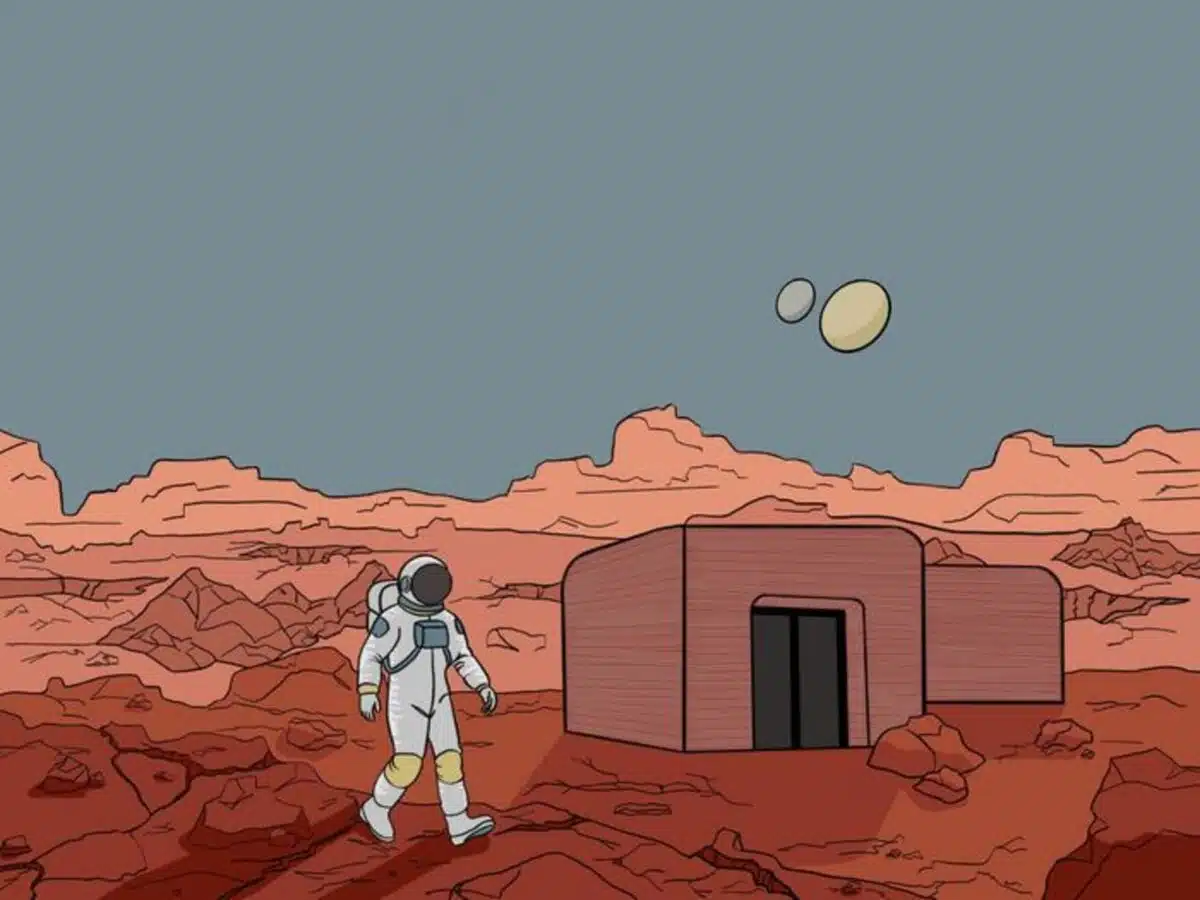Researchers from the University of Nebraska–Lincoln and Texas A&M University have developed a groundbreaking method to create durable construction materials on Mars using just local resources—Martian soil, sunlight, air, and water. This technique could eliminate the massive cost and logistical headache of transporting building supplies across 140 million miles of space.
Published in the Journal of Manufacturing Science and Engineering, the study outlines how scientists engineered a “synthetic community” of cyanobacteria and filamentous fungi—organisms that, when combined, can transform Mars’ dusty, barren soil into solid, rock-like structures. This duo acts similarly to lichens on Earth, which are cooperative lifeforms made of fungi and algae or bacteria.
Mars poses extreme challenges to human habitation. With average temperatures swinging between -135°F and 70°F, a near-total lack of oxygen, and relentless radiation, any long-term survival plan demands infrastructure that’s both strong and self-sufficient. Conventional ideas rely on shipping prefabricated habitats from Earth—a method so costly that each pound of cargo can cost tens of thousands of dollars. The new microbe-based strategy offers a radically different solution.
In the synthetic community, cyanobacteria act as solar-powered food producers. They absorb carbon dioxide from the Martian atmosphere, generate organic nutrients for the fungi, and increase carbonate ions essential for mineral formation. The fungi, in turn, act as natural builders, attracting metal ions and creating crystalline structures that eventually form cement-like materials.
Both organisms also secrete natural polymers that act as biological glue, binding Martian soil into solid material. This self-sustaining system requires no imported carbon or nitrogen—just Martian basics: soil, water, air, and light.
To ensure survivability, the fungi were collected from Earth’s harshest environments, including the alkaline soils of Pennsylvania’s Nottingham Serpentine Barrens, New Jersey’s Pine Barrens, and Canada’s Rocky Mountains. These ecosystems provided real-world training grounds for organisms expected to endure Martian conditions.
The researchers tested six cyanobacteria-fungi pairings using MGS-1, the most accurate Martian soil simulant available. With a pH of around 9.5—highly alkaline and generally toxic to most Earth microbes—MGS-1 challenged the organisms. Yet several of the engineered communities thrived, outperforming solo organisms in growth and resilience.
Not only did the cyanobacteria grow faster in mixed communities, but the fungi also survived without any added nutrients. Over 45 days, researchers used three separate methods to track growth and confirmed that these pairings were more than cohabitants—they were cooperating. Sugars produced by the bacteria were detected in the surrounding liquid only when the fungi were present, clear evidence of biological teamwork.
Different fungi produced distinct mineral structures:
- Trichoderma reesei formed prism-like crystals.
- Trichoderma viride yielded plate- and rod-shaped formations.
- Penicillium sipitatus generated gel-like crystals.
- Aspergillus niger built extensive mycelial networks ideal for flexible or foam-like materials.
Energy-dispersive X-ray spectroscopy revealed that most of the materials produced were calcium carbonate, the same mineral found in marble and limestone. In essence, the microbes were creating biological concrete.
From Lab to Construction Site: 3D Printing on Mars
The next step in this research involves adapting the process for use with 3D printing. The team is developing a technique that begins by creating a soft gel using Martian soil, natural polymers, and calcium ions. Structures are then printed in a calcium-rich vapor, allowing microorganisms to mineralize and solidify the material over about a month. Importantly, the construction process can be stopped at any time—heat or radiation will kill the microbes, giving astronauts full control over when a structure is considered “finished.”
Remaining Hurdles
Despite the promising results, challenges remain. The microbes can’t currently survive on the surface of Mars, where the atmospheric pressure is less than 1% of Earth’s and temperatures plunge far below freezing. To work, the microbes would need to live inside protective photobioreactors with Earth-like conditions.
Additionally, the experiments were conducted with simulated Martian soil. While MGS-1 is a close approximation, it doesn’t capture the full chemical complexity of actual Martian regolith. Reduced gravity on Mars—only 38% of Earth’s—could also influence how the materials form, though this has yet to be studied.
Still, this research marks a major step forward in building a future on Mars. By using life itself to build habitats from the materials at hand, humanity moves closer to a self-sustaining presence on the Red Planet.
By Impact Lab


